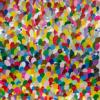Oral isotretinoin in photoaging: clinical and histopathological evidence of efficacy of an off-label indication
Background: Despite evidences of the beneficial clinical effects of oral isotretinoin in the treatment of cutaneous photoaging, scientific evidences are still scarce, mainly supported by histopathological and morphometric studies. Objectives To analyse possible clinical and morphological changes resulting from the treatment of photoaging with oral isotretinoin.
Methods: Thirty female patients, aged 40 to 55 years, phototypes II to IV, with moderate to severe photoaging were randomly assigned to two groups of 15 each. Group I (G I) patients were treated with 10 mg of isotretinoin and group II (G II) with 20 mg of oral isotretinoin thrice a week for 3 months. Skin biopsies were performed before and after the end of therapy, and the various sections were submitted to specific staining for collagen and elastic fibres. To analyse the changes, morphometric studies were performed, and the results obtained were analysed by Student's t-test (paired and non-paired). Clinical results of therapy regarding texture, colouring and aspect of the wrinkles were assessed by both physician and patient.
Results: The increase in the amount of collagen fibres was statistically significant with both dosage regimens (mean, 37.8%, increasing to 44.4%; P = 0.029 with the 10-mg dosage; and mean, 36.6%, increasing to 41.9%; P = 0.01 with the 20-mg dosage). A pattern pointing toward a decrease in the number of elastic fibres was found (mean, 15.3-12%; P = 0.014 with the 10-mg dosage; mean, 15.5-14%; P = 0.125 with the 20-mg dosage). Additionally, there was improvement in the general aspect of the skin, regarding texture, wrinkles depth and skin coloration.
Limitations: Despite ethical considerations, a lack of a control group using placebo may render the results less accurate.
Conclusion: Low dosages of oral isotretinoin seem to be an effective therapeutic option for cutaneous photoaging.
PMID: 18811602
Edited by Fredrik, 30 September 2008 - 12:25 AM.













































